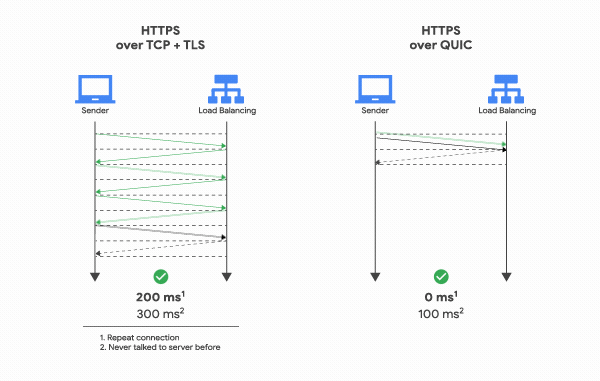Whether you’re really passionate about RPC, MQTT, Matrix or wayland, tell us more about the protocols or open standards you have strong opinions on!
RSS. It’s still around but slowly dying out. I feel like it only gets added to new websites because the programmers like it.
Theres quite a few sites that still use it and existing ones in the Fediverse have it built in (which is really cool). But your right, the general public have no concept of having something download and queue up on a service rather than just going to the site. And the RSS clients are all over the place with quality…
90% of the bullshit mass emails at my work could be an RSS feed.
“THIS WHOLE MEETING COULD HAVE BEEN AN RSS FEED!”
WebSub (formerly PubSubHubbub). Should have been a proper replacement for RSS with push support instead of polling. Too bad the docs were awful and adopting it as an end user was so difficult that it never caught on.
I still want something push based (without paying for those rss as a service)
It’s part of the RSS 2.0 standard. Of course it requires adoption by feed publishers.
Oh neat! I didn’t know this existed. By any chance, do you know of any RSS readers that have implemented it?
No I’m sorry, I pull my feeds manually using a barebones reader. I’m guessing your best bet is one of the web-based readers as it would require a client with a TCP port that’s reachable from the web. I have never seen a feed who provided the rssCloud feature though.
Literally nothing uses rssCloud. WebSub is what you want.
I wouldn’t say that it never caught on. I run a feed reader and ~6% of feeds have WebSub. Most of these are probably wordpress.com blogs which include it by default.
YouTube also sort of supports it, but they don’t really follow the standard so I don’t think it counts.
But the nice thing about WebSub is that it is sort of an invisible upgrade to the existing feed (or any other HTTP URI) so it just works when blogs enable it.
Most major feed reader services support it. One problem is that you need a stable URL to receive the notifications. So it is hard to make work with client-side readers. But I don’t think there is really a way around this other than holding a connection open to every feed you follow. So I would say that it does its job well. I don’t really see a need to get to 100% adoption or whatever. If you have a simple static-site blog that updates every month or so I don’t think it is a big deal that it doesn’t support WebSub.
I wish more websites would use RSS Feeds. :-(
It’s seen its renneisance recently
How so? Outside very niche stuff or podcasts I just don’t seem to it used that often.
Most websites still use standard back ends with RSS support. Even static site generators also do it. The only difficulty is user discovery.
Yeah… It always being there hardly makes it a “renaissance”, no?
Sadly so many rss feeds are just the first paragraph and not the whole article
Markdown. Its only in tech-spaces that its preferred, but it should be used everywhere. You can even write full books and academic papers in markdown (maybe with only a few extensions like latex / mathjax).
Instead, in a lot of fields, people are passing around variants of microsoft word documents with weird formatting and no standardization around headings, quotes, and comments.
Markdown is terrible as a standard because every parser works differently and when you try to standardize it (CommonMark, etc.), you find out that there are a bajillion edge cases, leading to an extremely bloated specification.
Agreed in principle, but in practice, I find it’s rarely a problem.
While editing, we pick an export tool for all editors and stick to it.
Once the document is stable, we export it to HTML or PDF and it’ll be stable forever.
Most ppl have settled on Commonmark luckily, including us.
Commonmark leaves some stuff like tables unspecified. That creates the need for another layer like GFM or mistletoe. Standardization is not a strong point for markdown.
I believe commonmark tries to specify a minimum baseline spec, and doesn’t try to to expand beyond that. It can be frustrating bc we’d like to see tables, superscripts, spoilers, and other things standardized, but I can see why they’d want to keep things minimal.
Asciidoc is a good example of why everything should be standardized. While markdown has multiple implementations, any document is tied to just one implementation. Asciidoc has just one implementation. But when the standard is ready, you should be able to switch implementations seamlessly.
Have you read the CommonMark specification? It’s very complex for a language that’s supposed to be lightweight.
What’s the alternative? We either have everything specified well, or we’ll have a million slightly incompatible implementations. I’ll take the big specification. At least it’s not HTML5.
An alternative would be a language with a simpler syntax. Something like XML, but less verbose.
And then we’ll be back to a hundred slightly incompatible versions. You need detailed specifications to avoid that. Why not stick to markdown?
Not if the language is standardized from the start.
Man, I’ve written three novels plus assorted shorter form stories in markdown.
There’s a learning curve, but once you get going, it’s so fluid. The problem is that when it comes time to format for release, you have to convert to something else, and not every word processor can handle markdown. It’s extra work, but worth it, imo.
Just set up pandoc and Bob’s your uncle. It’ll convert markdown to anything. You’ll never have to open another word processor.
Nice! Thanks for the tip!
Edit: holy shit, how have I never run across that before? That’s a brilliant program right there.
Pandoc + [your markdown editor of choice] is magic. Some editors even come with Pandoc as a dependency so you can export to more or less anything from the GUI. I think GhostWriter and Zettlr at least (I honestly can’t be sure, I’ve changed editors so often and now I just have some Pandoc conversion scripts in my file manager menu).
For sure, I bet full fledged editors like word don’t even let you import it.
Not correctly, no. Librewriter does a bit better, but still misses some bits
Silly question why can’t you convert markdown to PDF and pass that to publishers?
Because it isn’t doc is docx.
Publishers are pissy about such things. Even self publishing (which is what I do now), the various outlets still have limits to what they will use. Amazon accepts something like three file formats, including their own, and pdf isn’t on the list.
I could just do pdf for directly giving them away to people, but even then, epub is usually a better pick in terms of readability since that’s the standard for actual books since ereaders tend to display it better than pdfs. Most people reading books via files would be using something that can give a better experience with epub vs pdf.
I think Obsidian and Logseq are helping to change this.
Depends on the type of book. Since you need HTML for all non default styles. Therefore, it raises the bar… you need a bit of web dev knowledge which removes the biggest benefit of markdown: simplicity / ease of use.
Markdown is awesome, I agree! I did not realize you could extend markdown with anything other than html. The html extension is quite nice to do anything that markdown doesn’t support natively, but I wish there was an easier way to extend markdown. Maybe the ones you listed are what I need.
Hedgedoc / hackmd support a good amount of extensions out of the box. I think typora and obsidias do also (but not open source).
I frigging love markdown for everything!
My main wishlist for markdown, is a better live collaborative markdown editor. Hedgedoc works, but it’s showing it’s age, and they don’t seem to be getting close to releasing v2.
Etherpad also has a markdown extension, but it doesn’t import / export that well.
It is too basic. I guess something more full-fledged like… typst?
ReST (restructured text) is a good middle ground. I just wish it had more support outside of the python community. It could use some new/better tooling than Sphinx
Typst is a typesetting format - an alternative to LaTeX. Asciidoc is more of a competitor to markdown.
Learning that currently.
I agree 💯
IPv6. Lack of IPv4 addresses it’s a problem, specially in poorer countries. But still lots of servers and ISPs don’t support it natively. And what is worse. Lots of sysadmins don’t want to learn it.
Am sysadmin, can confirm I don’t wanna learn it.
Also a sysasmin, really don’t wanna learn it…or have to type it on the daily
not a sysadmin, but i admin a system or two, have yet to learn it myself, but will eventually learn it.
My university recently had Internet problems, where the DHCP only leased Out ipv6 addresses. For two days, we could all see which sites implemented ipv6 and which didn’t.
Many big corpo sites like GitHub or discord Apperently don’t. Small stuff like my personal website or https://suikagame.com do.
github is so stupid with that, it’s actually funny
That’s a fun little game there!
Lots of really large sites are horribly misconfigured. I had intermittent issues because one of the edge hosts in Netflix ‘s round robin dns did not do MTU discovery properly.
IPv6 is great, but NAT is quite functional and is prolonging the demise of IPv4.
My isp decided to put me behind a CGNAT and broke my access to my network from outside my network. Wanted to charge me $5 a month to get around it. It’s not easy to get around for a layman, but possible. More than anything it just pissed me off that I’d have to pay for something that 1 day ago was free.
How can you bypass CGNAT?
Set up a reverse proxy on another machine (like one of those free oracle cloud things). I can’t go into detail because I don’t know exactly how. I think cloudflare also has options for that for free. Either way it’s annoying.
Cloudflare tunnel, and its alternatives, such as localXpose, altho the privacy is probably questionable, and a many of them require a domain.
NAT is functional as long as you like NAT, which im pretty sure nobody likes, so uh.
Plenty of people like NAT.
the only people that like nat are network admins, and ISPs.
Everyone else hates them. The rest don’t care, but they wouldn’t know a NAT if it hit them in the face.
deleted by creator
You can have that with ipv6, too.
NAT is not for security, that’s what the firewall is for. Nobody can access your IPv6 network unless you allow access through the firewall.
I don’t think they were talking about access to the network.
“The inside of the network stay anonymous” sounds like they are talking about internet access to the internal network.
If computers connect to others through the internet, the IPv6 address can reveal how many computers there are on the local network, and if certain traffic to different destinations are coming from the same computer, but also if one of the computers has gone offline but then resumes from sleep/hibernation.
To me their comment means they want to avoid that, and I agree, I want to avoid that too. To fix these, I would need to configure NAT on my router for IPv6.Yes IPv6 address privacy extensions help somewhat, but
- computers won’t use a different v6 address for every distinct destination, they will just start using a new one from time to time
- computers won’t stop using the old v6 address immediately after wakeup
With v4 addresses these did not really matter, because everything was being sent from the same public IP, and and outside observer could only see what a “network” is doing collectively. But with v6 an address identifies a computer, across websites/services. Even if it’s just for a "short’ time, even if the address is randomized.
If you want privacy, you need some kind of VPN or onion routing. Even if everything you list were correct, the difference between IPv4 and 6 for privacy would be marginal.
Found the guy that does not want to learn IPv6!
You’re thinking of a firewall. NAT is just the thing that makes a connection appear to come from an IP on the internet when it’s really coming from your router, and it’s not needed with IPv6. But you would not see any difference with IPv6 without it.
You’re thinking of a firewall. NAT is just the thing that makes a connection appear to come from…
That connection only “appears to come from” if I explicitly put a rule in my NAT table directing it to my computer behind the router doing the NAT-ing.
Otherwise all connections through NAT are started from internal->external network requests and the state table in NAT keeps track of which internal IP is talking to which external IP and directs traffic as necessary.
So OP is correct, it does apply a measure of security. Port scanning someone behind NAT isn’t possible, you just end up port scanning their crappy NAT router provided by their ISP unless they have specifically opened up some ports and directed them to their internal IP address.
Compare this to IPV6 where you get a slice of the public address space to place your devices in and they are all directly addressable. In that case your crappy ISP router also is a “proper” firewall. Strangely enough it usually is a “stateful” firewall with default deny-all rules that tracks network connections and looks and performs almost exactly like the NAT version, just without address translation.
So OP is correct, it does apply a measure of security. Port scanning someone behind NAT isn’t possible, you just end up port scanning their crappy NAT router provided by their ISP unless they have specifically opened up some ports and directed them to their internal IP address.
You end up just port scanning their crappy router on IPv6 as well because ports that are not opened are stuck at the firewall either way, no matter if you use IPv4 or IPv6.
Just because every device gets a public IP does not mean that IP is publicly accessible.
An advantage that IPv6 has against port scanning is the absurdly large network sizes. For example, my ISP gives me a /56 prefix, that is 4,722,366,482,869,645,213,696 IPv6 addresses. Good luck finding the used ones with the port open you need.
Even with just a /64 prefix you get 18,446,744,073,709,551,616 addresses, way outside the feasibility of port scanning.
Compare this to IPV6 where you get a slice of the public address space to place your devices in and they are all directly addressable. In that case your crappy ISP router also is a “proper” firewall. Strangely enough it usually is a “stateful” firewall with default deny-all rules that tracks network connections and looks and performs almost exactly like the NAT version, just without address translation.
realistically, it wouldnt surprise me if ISPs started NATing on residential IPV6 networks, just for the simplicity, but still allowed end users to assign their own IPs if they so pleased. Given the surge in shitty IOT devices, that’s probably a good thing for most people. Though a firewall would also accomplish this as well.
No. Stop spreading that myth. NAT does fuck all for security. If you want a border gateway, you can just have a border gateway.
you know what is more secure? Not being connected to the internet.
Say this to my very large Canadian ISP who still doesn’t support IPv6 for residential customers. Last I checked, adoption in Canada was still under 50%.
50%?? I fucking wish. In Spain we are at 5%. I finally got IPv6 in my phone this year, but I want it in my home, which is still only available as IPv4 even if they’re the same ISP.
Unified Push.
Unbelievable that we have to rely on Google and co for sth as essential as push messages! Even among the open source community, the adoption is surprisingly limited.
Nobody knows about unifiedpush. Last time I checked, their Linux dbus distributor also wasn’t ready. There has to be a unified push to get it adopted.
Removed by mod
Fuck Unified Push. Just use the Web Push standard. https://www.rfc-editor.org/rfc/rfc8030
It is what is used for browser push messages, is already widely supported. Is compatible with existing push infrastructure and users and is end-to-end encrypted. IDK why Unified Push felt the need to create a new protocol when a perfectly good one already existed.
Although there is no “client side” spec. The Unified Push client side could be useful. But they should throw away their custom backend protocol and just use Web Push.
IPv6
I mean, why the hell is IPv4 still a thing??
Because ipv6 is yucky
Yeah I’m anti IPv6 so I’m not going to ever use it personally. Ipv4 is enough for me
It may be enough for you, but not for everybody.
go ahead and use that on your home network, but if you work in IT and deploy it on public networks i’m going to kick you in the nuts
Because SecOps still thinks NAT is security, and NetOps is decidedly against carrying around that stupid tradition.
You can even Nat still if you want too lol
That said have you looked at securing ipv6 networks?It can be a lot of new paridgms that need to be secured.
bruh you could just use dyndns on ipv6 and call it a day, even more secure than ipv4 with NAT. lmao.
Removed by mod
I hear you on this! Took me a whole day to get my router to delegate IPv6 properly. I’m sure that had it been better adopted, I wouldn’t be having such a hard time.
Try to remember a handful of them
In the world of computers, why would remembering numbers be the stop for new technologies?
Do you remember anyone’s public key? Certificate?
I don’t even remember domain (most) names, just Google them or save them as bookmarks or something.
The reason IPv4 still exists is because ISPs benefit from its scarcity. Big ISPs already paid a lot of money to own IPv4 addresses, if they switched to IPv6 that investnywould be worthless.
Try selling static IPv6 addresses as they do now with IPv4. People would laugh at them and just get a free IPv6 address from an ISP that wants to get new users and doesn’t charge for it.
The longer ISPs delay the adoption of IPv6, the longer they can milk IPv4 scarcity.
I don’t even remember my old ICQ UIN. People usually do that.
So yes, bring in IPv6.
Which ISPs offer IPv6 for free?
Asking for a friend.IPv6 addresses are practically endless, therefore their value is practically 0. ISPs justify charging extra for static IPv4 because IPv4 addresses do have a value.
If ISPs charge for static IPv6, then one of them could just give that service for free (while keeping the rest of the prices the same as their competitors). That would get them more customers while costing them nothing.
EDIT: I can’t give you an example of an ISP that offers free static IPv6 because there are no ISPs in my country that offer IPv6.
Should be every single one that supports IPv6.
For that matter, you should be getting an entire /60 at a minimum. Probably more like /56.
Removed by mod
On the Internet, no. On my home LAN? Absolutely. I disabled all IPv6 at home.
For what?
Shortening rules actually make IPv6 addresses easier to remember than IPv4. Just don’t use auto configuration.
damn if only we had a service that like, obfuscated and abstracted these hard to remember IPs that aren’t very user friendly, and turned them into something more usable. That would be cool i think. Someone should make that.
Some kind of name system surely.
perhaps one that were to operate on like, a domain level, maybe.
gah, i’m just not too sure there’s a good term for this though.
::1
That’s just one loopback address.
I could list 2^24 IPv4 loopback addresses.
- IPv6, needed for modern Internet not to collapse, would make many other important things easier. Easier to become an ISP, to selfhost, to build P2P networks, etc.
- GNU Taler, a payment protocol just look at it go: https://101010.pl/@didek/111934952208145427, or just imagine building a payment terminal of a Raspberry Pi
- Matrix, to unify chat, conference and calling apps
- some self-arranging darknet protocol becoming a norm like I2P, GNUNet or Yggdrasil, so we could have a backup when mass Internet blockage happen
I really hope matrix gets native VoIP. I saw like 2 years ago it was in beta, haven’t kept up with it though. I’d also really like voice channels like discord so my friends and I can replace discord but it seems like matrix isn’t interested in being a discord replacement
Matrix can be configured to have VoIP. I have it set up on my server. Haven’t tried it in group voice chat setting yet though. Only 1 on 1
Matrix I have doubts about. The idea of Tox was nicer, but the implementation quality and the scandal at some point didn’t help.
Tox felt more playable, like piping files over it or a remote shell over it (I know, bad associations, but still), or even using it for VPN. I think there were clients allowing to do such stuff, and the protocol allows it.
EDIT: I mean, it’s still alive, just don’t see it claiming the place of FOSS old Skype replacement as it did.
GNUNet - all you people mentioning it have peers? I tried to set it up a few weeks ago, couldn’t get peers.
Yggdrasil - feels cool.
I2P - not intended for that, I think.
I2P - not intended for that, I think.
to be clear, I2P is not really intended for anything, it’s used for everything. It supports all kinds of things, and there are people doing all kinds of things on it. Though i could see potential technological limitations being a problem.
What scandal did Matrix have? I only just tried out Matrix like a month ago and am unaware of anything like that.
Tox, not Matrix.
About Tox, I am not a fan of mixing up universal delivering of packets and applications. Piping files or using as VPS feels like something that would be better done with proper full network and not be mixed with chat.
I, on the contrary, think it’s cool for things to be universal, layered and reusable for different tasks.
I’m stupid, can you elaborate a little further about how ipv6 would make becoming an ISP easier?
There are no IPv4 addresses left. So you eather go IPv6-only, which would make many services not work. Or wait in a long queue to repurpose address spaces marked as depracated which would soon run out too. And then you put clients behind double or triple NAT doing having shitty service.
There’s proctored private resale of IPv4.
A lot of orgs (mine included) are sitting on large chunks of IPs they don’t need (we have a /16 and several /24s) because they adopted early, got an ASN and prefix assigned by ARIN, and their addressing scheme is now so disjointed and scattered that they can’t sell off anything bigger than a /22, and that makes setting up BGP a pain. Juice ain’t worth the squeeze.
Do Not Track
Such a simple solution for the cookie banner issue. But it prevented websites from tricking users into allowing them to gather their data, so it had to go.
Nobody was going to honor that. That’s just giving them an extra bit of data to track you with.
It could be forced by law
Globally?
Those cookie banners were introduced because of an EU law and are seen all over the world
Most of those cookie banners are not even needed, you only need them for tracking cookie, not login and session cookies. But of course everyone decided it is just easier to nag all the users with a big splash screen.
A lot of them are not even doing it right, you are not allowed to hint the user that accept all is the “correct” choice by having it in a different color than the others. And being able to say no to all shouls be as easy as accepting all, often it isn’t.
Basically, cookie banners are usually not needed and when they are they are most often incorrectlt designed (not by accident).
But of course everyone decided it is just easier to nag all the users with a big splash screen.
Nope, the thing is, you’ll very rarely find a website that only uses technically necessary session/login cookies. The reason every fucking website, yes, even the one from the barber shop around the corner, has a humongous cookie banner is that every fucking website helps google and other corporations to track users across the whole internet for no reason.
Yes, seen by people visiting EU websites or companies with an EU presence. And because whether or not they assign a cookie is easily verifiable by the person on the other end.
RSS (RDF Site Summary or Really Simple Syndication) It is in use a fair amount, but it is usually buried. Many people don’t know it exists and because of that I am afraid it will one day go away.
I find it a great simple way to stay up to date across multiple web sites the way I want to (on my terms, not theirs) By the way, it works on Lemmy to :)
Honestly there is rarely a blog I want to follow that doesn’t have it. I do think it would be great to have more readers using it so that it becomes more significant, but for my reading it is actually pretty great.
odf/odt/ods
.md
SimpleX
Matrix
OpenPGP
Last, certainly not least… ActivityPub
XMPP
Call me old fashioned, but I still call it Jabber.
🙂
It really is a better name.
I came here to say matrix but I’m not gonna lie. If XMPP had gotten the traction it deserved we wouldn’t need matrix.
Why not matrix?
You’re going off-topic from the OP question :-) But to answer your new question : I do not trust Matrix enough when it comes to privacy. I know that this link is old but still. https://disroot.org/en/blog/matrix-closure
Then again I do not trust Signal that much either but sometimes compromises need to be made to get things done. With XMPP the end user can host their own server if they wish to, without meta data going to a centralized point. And video calls via XMPP and Conversations were a pleasure to use when I used it during the Covid-19 pandemic.
LaTeX. As someone in academia, I absolutely love it. It has some issues like package incompatibility, but it’s far far better than anything else I’ve used. It’s basically ubiquitous in academia, and I wish it were the case everywhere else as well.
What about Typst?
The Typst compiler is open source. It is the open core of the web app and we will develop and maintain it in cooperation with the community
Try Typst now!
Create a free account to join the public beta.
Beta software marketing with “free accounts” and an open core compiler for a (probably) future paid web service tells me all I need to know.
Even though LaTeX has issues, not being an online service is not one of them.
They host a proprietary service that does all the stuff, the compiler and spec are completely FOSS. So you need to create your own implementations, which is not hard.
I dont think they will close source the compiler. And thats basically everything thats needed?
I have 0 problems with people creating a fancy proprietary implementation to get people hooked. I will never use an online editor, but why care?
Learning LaTeX and working around its quirks seems like a much better time investment than sidegrading to something that lives on premises given by a proprietary commercial project. If someone saw LaTeX and said “I want to make some version of this that is better”, without alterior motives, they would probably just work on improving LaTeX (which a whole lot of people do).
Fancy does not mean better, and often is in many ways worse than plain old boring.
You know Overleaf is a thing right?
Many projects need to be rewritten from scratch I think. But I also think an easier markup language for LaTeX could be possible, keeping all the nice templates etc.
From the LaTeX project:
The experience gained from the production and maintenance of LaTeX2e (the version you have been using for many years) had a major influence on our goals for future development and on new code which is now integrated into LaTeX.
A while ago we made the decision to drop the idea of a separate LaTeX3 format that would exist in parallel to LaTeX2e, but instead decided to gradually modernize LaTeX to keep it competitive in today’s world while maintaining compatibility methods for older documents.
I think this decision was pretty much a good one.
Overleaf does not modernize LaTeX in meaningful ways. It only adds cloud functionality and glossy appearance that you can get on dedicated editors anyways.
No, but Overleaf is just a proprietary fancy editor like the Typst one. Meanwhile typst is just as usable for building editor too.
I dont see any arguments against typst really. I am using Markdown all time and find it best, but lacking. Then LaTeX, honestly I dont want to learn as it must be a pain to write.
Now in typst, you can write academic papers etc just as well. All you need is free software, with good backing, modern tooling (rust, cargo), thus it runs everywhere. Its pretty cool!
or you could also just make an open source wrapper for latex and call it a day.
Nothing needs to be closed source to get people to use it.
And it isnt :D the compiler produces PDFs which can be read with anything. The spec is open so you can write the code with any editor.
Just needs integration, will see if I can add the syntax highlighting to Kate
i suppose that’s the case, but if you ever partially open source something, i think you’re probably trying a little too hard.
It’s not a standard but still its an interesting software so I’ll post this here:
Joking aside, I love and hate it. Its paradigm is almost like using the C preprocessor to build a really awkward Turing-machine. TeX/LaTeX does a great job of what it was intended to do; it applies high quality typesetting rules to complex material and produces really good results. I love the output I can get with it and I will be eternally grateful that Donald Knuth decided to tackle this problem. And despite my complaints below, that gratitude is genuine. Being able to redefine something in a context-sensitive way, or to be able to rely on semantics to produce spacing appropriate to an operator vs a variable etc; these are beautiful things.
The problem is, at least once a day I’m left wishing I could just write a callable routine in a normal language with variables, types, arrays, loops and so on. You can implement all those things in TeX, but TeX doesn’t have a normal notion of strings, numbers or arrays, so it is rare that you can do a complicated thing in an efficient way, with readable code. So as a language, TeX frequently leads to cargo-cult programming. I’m not aware that you can invoke reflection after a page is output, to see what decisions on glue and breaks were made; but at the same time you can’t conditionally include something that is dependent on those decisions, since the decision will depend on what is included. This leads to some horrible conditionals combined with compiling twice, and the results are not always deterministic. Sometimes I find it’s quicker to work around things like that by writing an external program that modifies the resulting PDF output, but that seems perverse.
At the same time, there’s really nothing else out there that comes close to doing what LaTeX does, and if you have the patience, the quality of documents it can produce is essentially unbounded. The legacy of encodings, category codes, parameter limits, stack limits etc. just makes it very hard for package writers, and consumes a great deal of time for a lot of people. But maybe I am picky about things that a saner person would just live with.
A lot of very talented people have written a lot of very complex packages to save the user from these esoteric details, and as a result LaTeX is alive and well, and 99% of the time you can get the results you want, using off-the-shelf parts. The remaining 1% of the time, getting the result you want requires a level of expertise that is unreasonable to expect of users. (For comparison, I wrote an optimising C compiler and generally found it far easier to make that work as expected, than some of the things I’ve tried, and failed, to do properly in LaTeX. I now have a rule; if getting some weird alignment to work takes me more than an hour, I just fake it with a postscript file, an image, or write an external program to generate it longhand, in order to save my sanity.)
I think (and certainly hope) that LaTeX is here to stay, in much the same way that C and assembly language are. As time moves forward I think we’ll see more and more abstractions and fewer people dealing with the internals. But I will be forever grateful to the people who are experts in TeX, and who keep providing us with incredible packages.
I honestly just use it for my resume with a template I found, so my knowledge is extremely basic, but I really do love the concept that I can “compile” and actually see the source of my document’s formatting.
It really needs to significantly improve its live update capability. Typst is more capable in that regard.
Is it practical outside of academia? I heard the learning curve is kinda big
Nope and yep. It’s an incredible tool, but it’s got a vim-sized learning curve to really leverage it plus other significant drawbacks. Still my beloved one-and-only when I can get away with it, but its a bit of a masochistic acquired taste for sure.
Template tweaking, as I imagine academia heavily relies on, is really the closest to practical it gets. You do still get beautiful results, it’s just hard to express yourself arbitrarily without really committing to the bit.
Outside of academia, would you say it still provides significant upside over markdown?
Markdown and LaTeX are meant for entirely different purposes. It’s somewhat analogous to HTML vs PDF. While it’s possible to write books with Markdown, it’s a vastly inferior solution compared to latex or typst (for fixed format docs like books).
It’s got a vim-sized learning curve to really leverage it
As a regular vim user, I have to say. Vim makes sense after you put some effort into learning it. I can’t say the same about latex.
For me it’s more pleasant than editing formulae in LO, but still took a lot of time.
I wrote my masters in LaTeX and while I appreciate the structuredness and the fact I could use vim, it was so quirky. Having to spend half an hour to fix a non obvious compile error, more than once, was a big distractor. I’m sure it gets better when you use it more but I don’t think I have ever used it since. I’m not in academia and I don’t need to solve compile problems when creating an invoice or writing a letter to local government.
It’s basically ubiquitous in academia
You mean STEM. In the humanities we do just fine without, tyvm.
IDK dude. My sister is doing master’s in Philosophy. She uses LaTeX, and so do most others in her batch.
ok well to be fair philosophers will also fuck shit up just to make a point. So i’m not sure how fair that is.
I personally feel like it should be a standard extended markdown that allows latex code.
IOT devices shouldn’t connect to wifi. ZWave or zigbee is much better suited to IOT stuff, but it seems to mostly get adopted in very limited, locked down proprietary shit like Hue Lights.
Isn’t Matter supposed to solve this issue?
There’s only one case I’ve found where Wi-Fi use seems acceptable in IoT: ESPHome. It’s open-source firmware for microcontrollers that makes DIY IoT sensors and controls accessible over LAN without phoning home to whatever remote server, without trying to make anything accessible over the Internet, and without breaking in any way if the device has no route to the Internet.
I still wouldn’t call Wi-Fi use ideal even there; mesh can help in larger homes and Z-Wave/Zigbee radios tend to be more power efficient, though ESP32 isn’t exactly suited for a battery-powered device that’s expected to run 24/7 regardless.
Yes but at least Hue (and IKEA and LIDL and many other brands’) lights work well with open Zigbee coordinators, like deconz and ZHA in Home Assistant.
I wish there were more Zigbee and Zwave and less WiFi IoT devices too. I don’t even have a Zwave coordinator because I never found anything I wanted with Zwave support.
- Communication: Matrix
- Browsing: I2P
- Communities: ActivityPub / Mastodon
- Software Forge: Fogejo + ForgeFed
- OS: Linux
- Money: Monero
Since they meet at least one of,
if not all of the following:- Decentralized / Federated
- Sensorship resistant
- Privacy respecting
- Open source
Matrix… it’s on such a good path I can’t complain. Adoption could be faster but it’s alright.
I2p, although I have no idea if the lack of adoption has not a very good reason.
I love i2p. I wish it had more adoption / was easier to use.
I second Matrix, though I’ve been waiting for e2ee direct p2p (the Dendrite project) do be worked on for a while. Having something like that, that’s truly decentralized while secure and hiding metadata where possible, would be a dream.
Apparently dendrite is just on maintenance due to insufficient funds. It was what i set up on a test instance because it is lighter, etc. Go figure.
Conduit might be an option. It’s still under development. It’s also lightweight due to Rust (instead of Python as in Synapse).
Yeah I’ve been following that. It seemed at the time the project didn’t implement nearly all the specs as dendrite which was still lagging synapse.
Might take another look though. I really did want to use it since it was written in rust. Seemed it should probably be more performant, everything else being equal.
I was actually surprised to find out QUIC is fairly close to being default.
Wikipedia
HTTP/3 uses QUIC, a multiplexed transport protocol built on UDP.
HTTP/3 is (at least partially) supported by 97% of tracked web browser installations (thereof of 98% of “tracked mobile” web browsers), and 29% of the top 10 million websites.




































